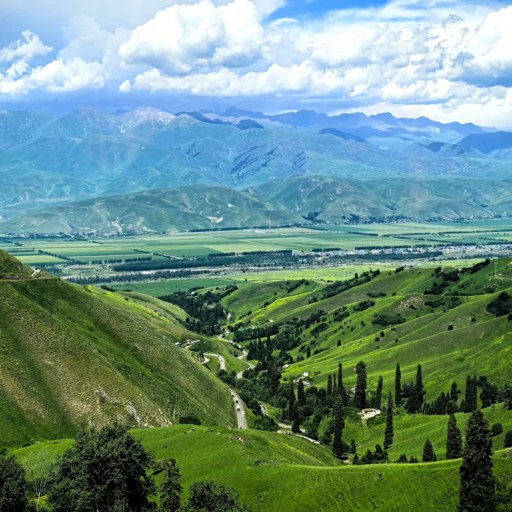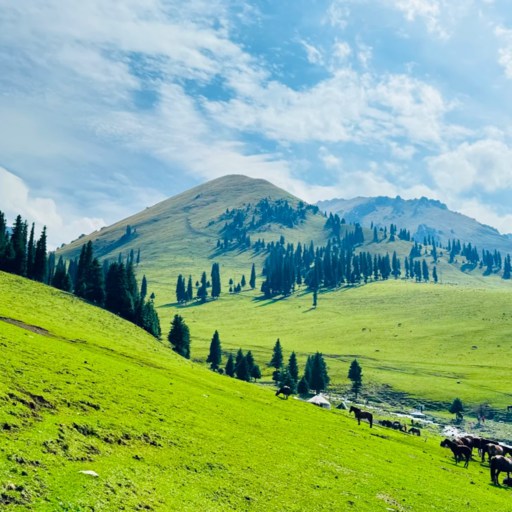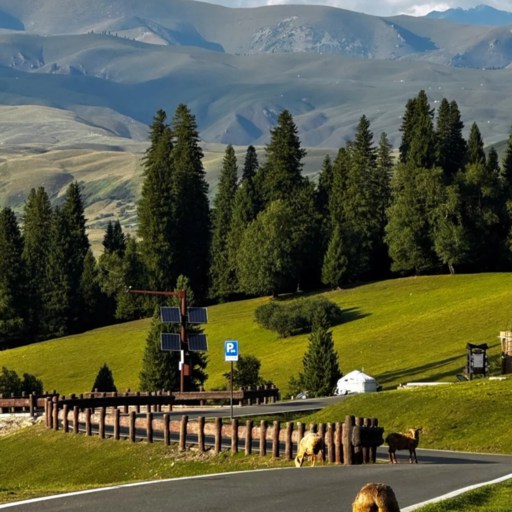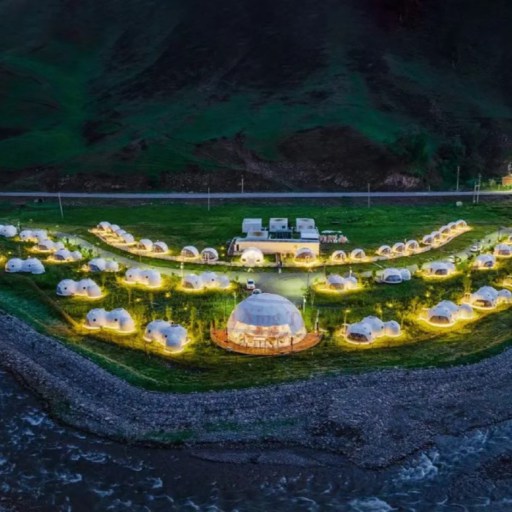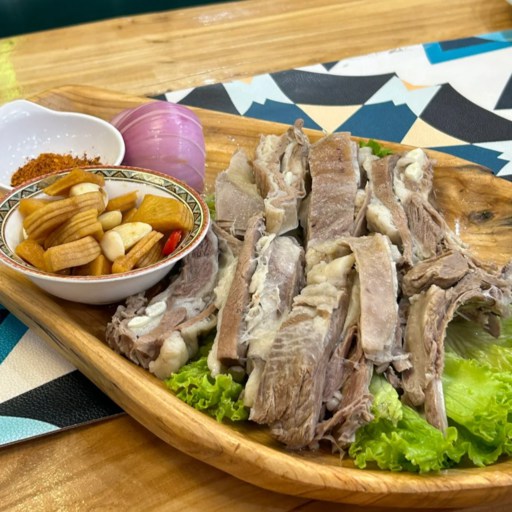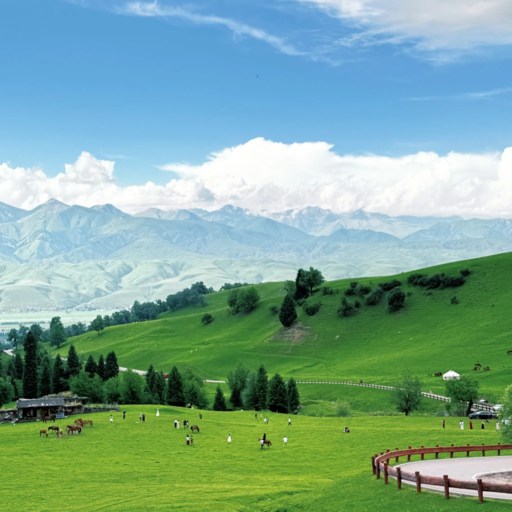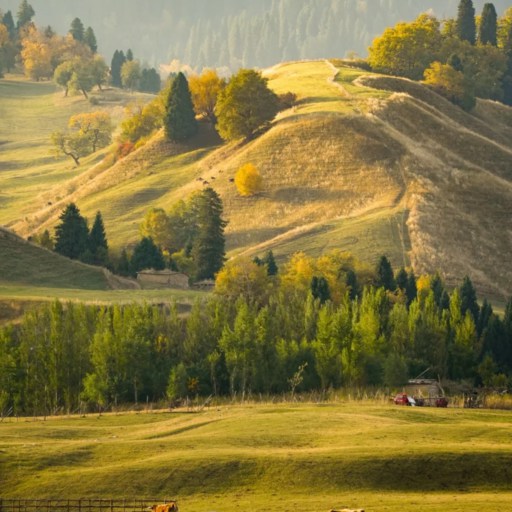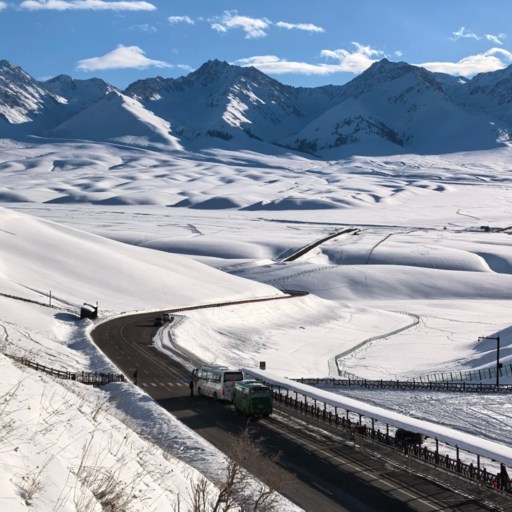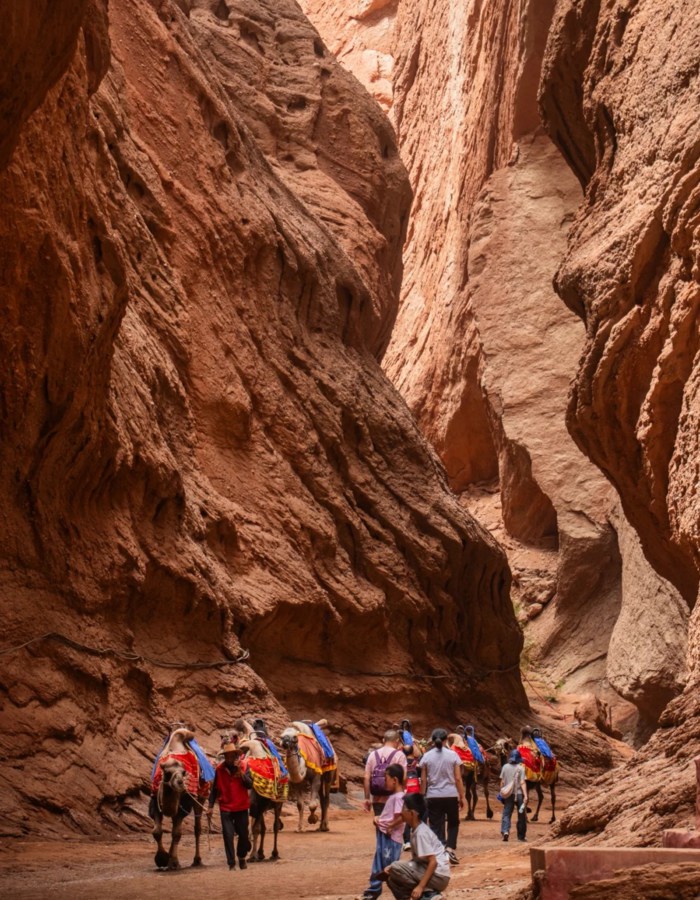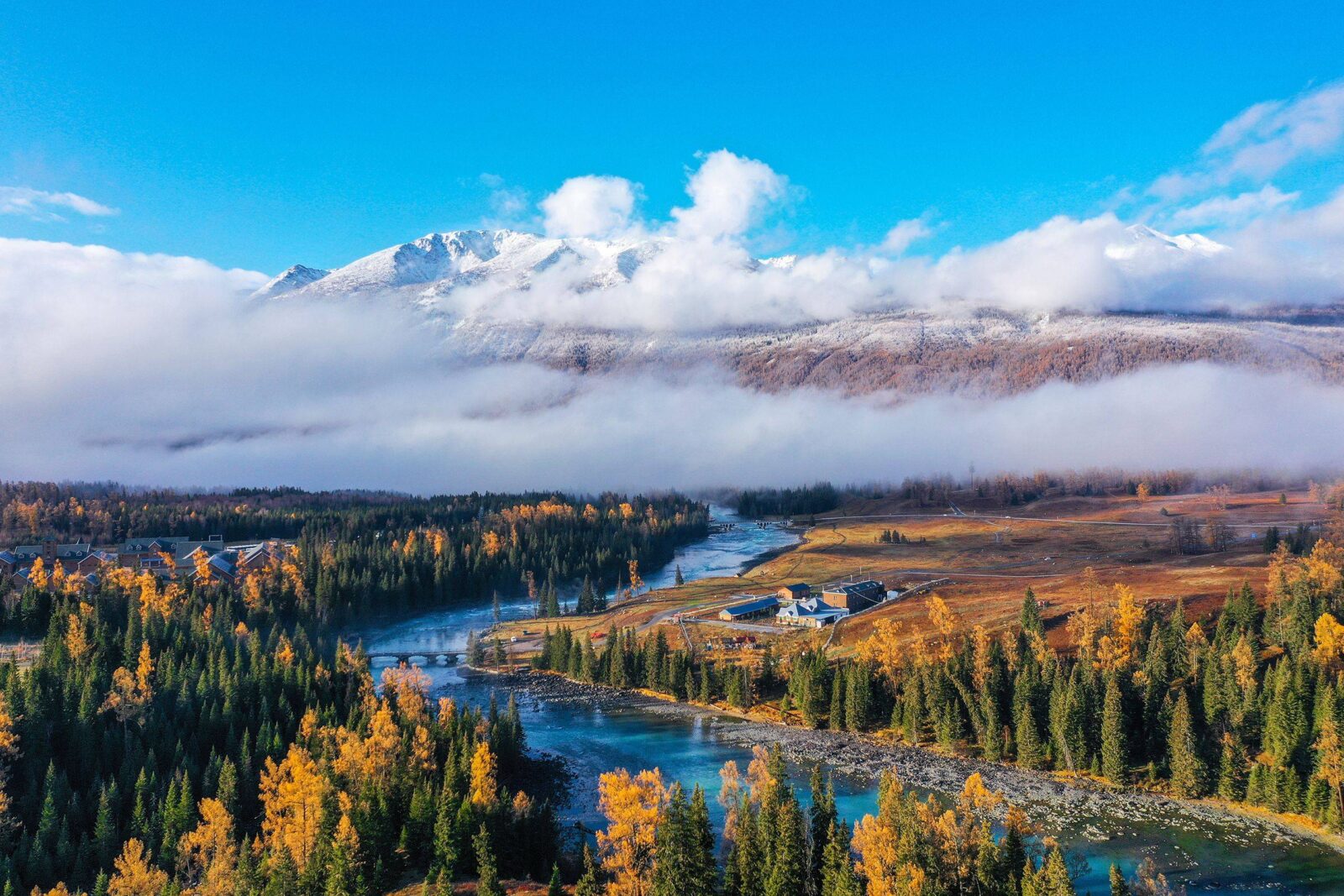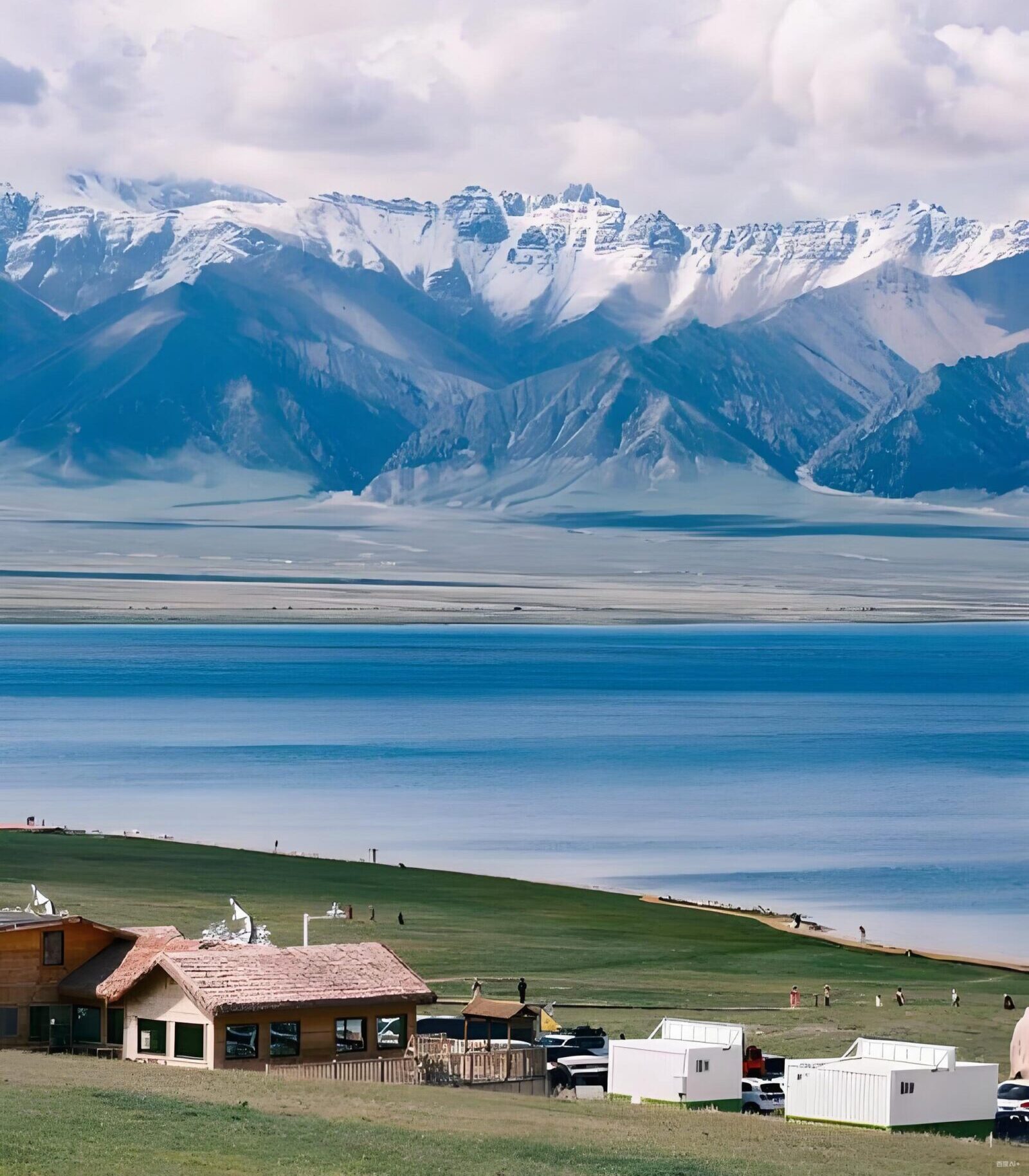
Naraty Grassland
When the fire subsides in their yurts locals are fond of telling this story. They tell how the soldiers of Genghis Khan were the ones who, half-starving, crossed these frozen Tianshan passes, and then found themselves in a green valley which shone in the evening sun. Some one told and screamed Naraty!--that is, the sun has come. That scream persisted, even after the army had disappeared.
Today naraty grassland remains that jolt of relief after a long highway, green endless, jewels of stream winding along the crests, horses that graze where the shadows of the clouds fall. Not some scenic location where there are ticket booths but one where herders of Kazakh people actually live, quarrel, and laugh. You can listen to pop music in a truck of a person, smell the milk tea and you understand that this legendary pasture is still alive.
Quick Facts about Naraty Grassland
| Location | Nalati Town, Ili Kazakh Autonomous Prefecture, Xinjiang |
| Altitude | ≈ 2,200 m (7,200 ft) |
| Entrance Fee | CNY 95 (≈ USD 13) |
| Horse Riding | CNY 80–200 per hour |
| Getting There | Fly to Nalati Airport or drive from Yining (≈ 4 hrs) |
| Nearest Town | Nalati Town — basic hotels, some accept foreigners |
Why Naraty Grassland Feels Different from Any Other in China
- Tianshan Mountains
- Ili Valley
The Legend Behind the Name
All Kazakh herders I met appeared to possess their variant of the legend about naraty grassland. One of them began when the army of Genghis Khan, lost on the white side of the Tianshan range, fell upon this unexpected green valley. The soldiers, who were frozen and half-crazed with starvation, watched the sun-shine peep through and yelled Naraty! the place of the first sun-shine. It is one of such stories that it seems to be exaggerated until one is there and observes the light with their own eyes.
In a smoky yurt by the river, where I heard it again, the taste of a bowl of milk tea, which had an almost salty flavour, was faintly salty. One of the women who told me so smiled and said that her grandfather would take visitors to the top of the ridge where the first ray of the sun struck the grass. The wind blew against the felt walls outside and the horses snorted somewhere in the dark. At that, the Nalati name story was not a history at all it was something that was going on and being told every sunrise by itself.
Nature in Motion — Clouds, Horses & Endless Sky
The first time I saw the naraty grassland scenery in the morning, I could not view it as still. It was all in motion-- clouds were in the air, horses fidgetted and even the mist was slipping down the hills like matted water. At noon the hues turned to pallid silver but could not be called that inaccessible green that photographers are pursuing in TripAdvisor. Somebody wrote there that the grass is greener there and I believe that is so, but perhaps it is simply the elevation doing tricks.
By evening, all of the Xinjiang sky meadow turns amber. Children are riding horses around close to the fence, and their scream is a contrast to the hum of wind. The shadows stretch out until they are devoured by the road, and the light eventually fades in the same dramatic manner that the legend started with which is abrupt, golden and out before you can capture the ultimate snapshot. It is not a scenery that one observes but one that one inhales and senses flowing through the skin.
Top Things to Do at Naraty Grassland
- Nalati River Valley
- Nalati Sky Grassland
- Panlong Valley
Ride Across the Sky — Horseback & River Valley Trails
The most traditional means of viewing the large meadow is through horseback. The natives will inform you that it is alright to walk, but naraty grassland horseriding is the only way the country will unravel itself to you, one step at a time, on rhythm. Those official riding areas are close to the river valley of Nalati, which is crossed by clear streams that run through flower fields and the air is slightly scented of pine. The price of most herders is between 80-150 per hour, and you can monitor the new price offered on Ctrip.). Their hands will give you a wool saddle, and unless you seem to know what you want, an old helmet that is out of service. It is no smooth sailing tourism, it is dirty, rough, and that is why it is real.
One of the TripAdvisor reviewers once gave it a four-star rating stating that he did not expect to laugh so much holding the reins. She wasn’t exaggerating. The horses have these routes more familiar than any GPS. They will pass little rivers unmindful, at other times halting half-way across, to take a drink. The more you go up the town becomes smaller until it gets lost to the folds of the valley. You can feel the wind on your cheeks, and all you hear for a few minutes is the sound of the hooves upon the ground. If you enjoy mountain trails that blend nature with reflection, you might also like reading about another highland gem — Tianchi Lake in Xinjiang. That is the point when most riders say that they have finally realized why this is not just a sightseeing rest-stop this is a talk between mountain, sky, and breath.
Sky Grassland and Panlong Valley — Photographer’s Dream
And even if you are not yet done with your camera roll, go to the Nalati sky grassland, the top verge, which the locals refer to as the balcony of Ili. It is some twenty minutes ride up the lower meadow and it is well worth the twists. The perspective is as lengthened as a traveling postcard, you see, beneath it, row upon row of green terraces, snow mountains, and thin silver rivers winding along the line. To a person who is pursuing naraty grassland photography, sunrise (approximately 7:00 a.m. during summer) cannot be beaten.
A short ride out to Panlong Valley is less noisy. The highway sinks into pine brook whereby the breeze is quick to cool down and the sunshine is paddled through tree leaves like glass. There I stood one hour hoping that the clouds would clear off. Some of the local children on bike paused in curiosity why I was not going. It was not much less than two minutes when the fog parted, and the whole valley was gold. One of them shouted, quick, snap!-- take it quick!-- and we all laughed as though we had caught a rare thing.
The upper trecks towards the viewing tower are 20-30 fees more, but that is a small price to pay to have a broad horizon and no crowds. It is possible to see down there riders riding along in dots going through green waves and above them the Tianshan peaks cutting into the sky. There are no photos that really capture it despite the number of photos you have taken. Each shot is a little different, and that is what annoys you because the light here is changing faster than your camera can focus on it, and that is what makes you addicted to it.
Where to Stay and Eat around Naraty Grassland
- Nalati Star Tent Village
- Naraty Grassland Food
Staying Close to the Stars — Yurts & Town Hotels
One night here is like a change of opinion about the place. The naraty grassland accommodation becomes virtually quiet when the day-trippers go, the wind only breaking the yurt flaps. The Naraty Grassland Yurt Camp, which is located near the Sky Meadow entrance, and Nalati Star Tent Village, which is located near the river valley, are the most atmospheric. Both of these camps accommodate international visitors — but you must register with your passport — and are around 300-500 per night. There are plump quilts, stamped carpets, within, and perhaps a cat crept in to keep himself warm.
In case you do not want to be romantically involved, instead of romance, you can enjoy mid-range hotels such as Nalati Tianma Resort and Yili Grassland Hotel which have been verified that they will be open to foreign travelers. They are heated, have Wi-Fi and real bathrooms, which is luxurious at 2,200 meters. Even in July, when informed of the altitude, the first-timers might feel a bit out of breath as the nights drop to 5 o C. Before going to bed, locals claim that one bowl of hot milk tea can help, and it can. In a Nalati yurt, you go outside after midnight and the stars are so near that you can reach them, the air is thin and alive and that is what makes you remember it.
What to Eat — Kazakh Flavors on the Prairie
Dinners here follow the rhythm of the herd, not the hotels. Most tourists start with salty milk tea, the kind that shocks you at first sip and soon becomes addictive. Then comes roasted lamb ribs, crisp at the edges and juicy inside, sometimes served on wooden trays handmade by local villagers and still steaming from the grill. The naraty grassland food scene isn’t fancy, but it’s deeply soulful. In town, Kazakh cuisine Nalati restaurants near the main gate serve hand-pulled noodles topped with lamb fat and green peppers for about ¥35–50.
One evening, I shared naan with a herder named Ruslan. He tore pieces straight from the bread, dipped them in mutton soup, and passed them over. Horses stamped nearby while smoke drifted across from another camp. We barely shared a language, yet that bread said enough. Here, eating isn’t just about flavor but about connection — the kind you never plan. When the last embers fade, you realize this grassland doesn’t just feed you; it warms you in ways menus never could.
When and How to Visit Naraty Grassland
- Summer of Naraty Grassland
- Autumn of Naraty Grassland
- Winter of Naraty Grassland
Best Season & Weather Tips
The best time to visit naraty grassland depends on what kind of traveler you are. The grassland stays open and vibrant from April to October, and every month shows a new shade of the same sky. According to the China Meteorological Administration, wildflowers bloom in July and August, when meadows burst with color. Average daytime temperatures hover around 20°C, dropping to 8°C at night. May can still feel raw and cold, while September turns golden and crisp — the month locals secretly love most.
Arrive too early, and snow from the Tianshan still blocks parts of the road. Arrive too late, and frost creeps in fast. The Nalati weather changes quickly; sunny mornings can turn stormy within an hour. Always pack a light rain jacket, even on bright days, and never skip sunscreen. That thin mountain air burns faster than you’d expect. I learned that the hard way one afternoon, walking back with cheeks redder than the sunset. For photographers, the light before 9:00 a.m. and after 6:00 p.m. is unbeatable. It softens everything — the ridges, the rivers, even the tourists — and makes the whole meadow look like a living painting.
Getting There — Flights, Buses & Scenic Drives
The adventure really starts when you try to figure out the route to naraty grassland. Most tourists begin in Urumqi, about 640 km away, or from Yining City, which is closer—roughly four hours by road. The nearest airport, Nalati Airport (NLT), sits just 60 km from the entrance. Taxis and minivans wait outside, and rides into the scenic area cost around ¥150–200. If you’re on a smaller budget, public buses leave Yining Bus Station daily for about ¥70, though they get crowded during summer holidays.
Half the reward is the road itself. As you drive into the Ili Valley, the mountains open and close like curtains. Roadside stalls sell smoked fish and dried apricots; once, I swear, a man was selling Yak iPhone covers. Sheep spill over the asphalt in slow waves, and sometimes traffic stops until the herd passes. In winter, snow may shut down mountain passes, and even locals avoid night drives then. For a calmer trip, book a private car on Ctrip or WeChat Travel Mini-Programs — most drivers double as storytellers with local tales to share.
That’s what Nalati transportation feels like — not just logistics but a prelude to the place itself. The road gives you a preview: quiet, wide, unpredictable, and always under the same restless clouds you’ll soon be standing beneath.
FAQ about Naraty Grassland
Q: Is Naraty Grassland worth visiting for first-time Xinjiang travelers?
Yes, Naraty grassland is the easiest area in Xinjiang to take in the scale of what is possible without rigorous trekking. It has accessibility, safety, and is rich in Kazakh culture and high-altitude visual beauty. Compared to the desert or canyon sights found further west, the Nalati meadow has a softer side. Rivers, yurts and open sky which do not feel staged to the visitor. It is the ideal place for the visitor to get their first idea of how wild Xinjiang can still be.
Q: How much is the entrance ticket to Naraty Grassland?
The ordinary ticket for naraty grassland is ¥95 (about USD 13), which includes the shuttle bus transport within the scenic area. Horse riding, view-decks, and the Nalati Sky Grassland cableway are optional extras (about ¥80-200, depending on the season). The prices may vary slightly around the peak season (July-August), and it is advisable to check Ctrip, or other transport sources for alterations from the list before travelling.
Q: Can foreigners stay overnight inside the Naraty Scenic Area?
Yes, there are several yurts and hotels licensed within the naraty grassland area for the accommodation of foreigners. The Nalati Star Tent Village and Tianma Resort Hotel are safe picks and they want a passport for registering. The furnishings are simple and the nights cold, but the starry skies are at times dazzling. Most travellers feel that it is more authentic to sleep in the Nalati meadow than to return to the town after a day’s touring.
Q: When is the best month for photography in Naraty Grassland?
The light conditions are at their best between the end of June and the middle of August, when wild flowers are in full bloom, and air in naraty grassland is clear after the afternoon rain. Early morning light about 7 a.m. shows long shadows thrown over the Nalati River Valley. The sunset produces the orange illumination of the ridges to the west. In September, golden light prevails but the nights are cold and in terms of pictures, they are ideal if the softer and moodier effects are preferred to the greens of post card character.
Q: Are there any bus or train connections from Yining or Urumqi?
Yes. Daily buses run from Yining to naraty grassland in about four hours and these cost roughly ¥70. No train transport is yet available, but it is possible theoretically for passengers to reach Yining by rail from Urumqi, changing on to bus or taxi. In the summer time, shared vans are available via Nalati town, giving flexibility of transport though these may be slow at times when sheep resort to invading the highway.
Q: What should I wear or pack for Naraty Grassland?
Weather swings fast. Even in July, naraty grassland mornings feel chilly, while afternoons burn under the Nalati sky. Bring layers: a windproof jacket, sunblock, hat, and sturdy shoes for uneven trails. Locals also suggest carrying milk tea powder or chocolate to ease light altitude fatigue — a small trick that works surprisingly well.
Q: Is Naraty Grassland family-friendly and safe for kids?
Yes, families often visit naraty grassland for its mild slopes and safe walking paths. Horses roam freely but stay calm if you keep distance. Kids enjoy kite-flying near the Nalati river valley, and yurts provide warm shelter if weather turns cold. Just plan rest breaks — the altitude (2,200 m) can tire little ones faster than you expect.
Q: Are drones allowed for photography in Naraty Grassland?
Technically yes, but with limits. In naraty grassland, small recreational drones are permitted below 120 m altitude, away from crowds or livestock. The Nalati management office may check permits for professional gear. Avoid flying near yurts or during herding hours — it startles horses, and herders won’t find it funny. Always keep line-of-sight; wind speeds change quickly.
Q: What local dishes should I try in Nalati Town?
Food here stays true to Kazakh roots. Don’t miss hand-pulled noodles with lamb, roasted ribs, and the famous salty milk tea that defines naraty grassland food. Try the Kazakh cuisine Nalati restaurants near the main gate — most serve naan baked in clay ovens and kebabs for ¥25–40. It’s simple, hearty, and fits the mountain air perfectly.
Q: How does Naraty compare with other Xinjiang grasslands like Sayram or Bayinbuluk?
Each has its own character. Naraty grassland feels gentler and more human — herders, horses, and easy access. Sayram Lake is wilder, ringed by snow peaks, while Bayinbuluk is famous for its swan lake and vast scale. Many travelers call Nalati meadow the “balanced choice”: scenic like Sayram but with more comfort and cultural warmth.


